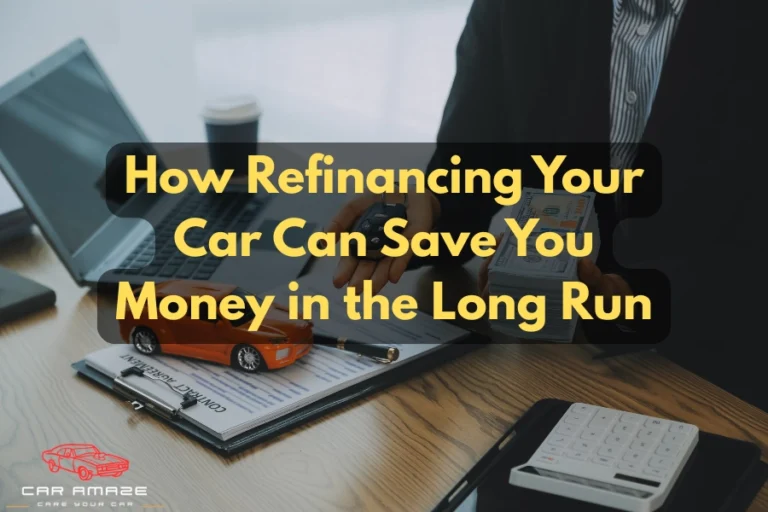What happens to the debt when a car is repossessed?

When the car owner buys the car on a lease, they agree to pay the installments in an agreed-upon time. If someone fails to pay the loan, the lender can repossess the car. You might be wondering: what happens to the debt when a car is repossessed? The answer is that the debt is still left behind. Here in this guide I have thoroughly explained the debt process when a car is repossessed based on my research and personal experience.
Table of contents
- What Happens to the Debt When a Car is Repossessed?
- Causes and Impact of Car Repossession on Debt
- What Makes a Car Loan “Secured”?
- Redemption Process: Can You Get Your Car Back?
- How is a deficiency balance calculated?
- What Are Underwater Car Loans and What Happens to the Debt?
- Options for Dealing with a Deficiency Balance After Repossession
- Conclusion
- FAQs
What Happens to the Debt When a Car is Repossessed?
When a car is repossessed, the debt does not automatically go away. The ultimate decision depends on the selling of the car at auction. If the selling price of the car does not cover the remaining loan, the borrower has to pay the debt. In this case the borrower owes some money, which is called a deficiency balance.
For example, if a person owes $10,000 on their car loan and the car is sold for $6,000, the borrower still has to pay $4,000 in debt to the lender.
Causes and Impact of Car Repossession on Debt
There are several causes of car repossession:
- Missed Payments: The most common reason is that the borrower fails to make payments on time.
- Financial Hardship: Sometimes, people lose their jobs, fall ill, or experience unexpected expenses. These financial issues make it hard to keep up with car payments.
- Legal Reasons: If the borrower breaks the terms of the loan contract, it can lead to car repossession. For example, the lender can take action if you sell the car without permission.

Impact of Car Repossession on Debt
These were some potential reasons for the car repossession. But do you know what happens to the debt when a car is repossessed? You have to pay the remaining debt as well as face some other issues.
The common impact of the car repossession is damage to your credit score. Moreover, it will be very hard for you to get a loan or credit back in the future.
What Happens to the Debt After Repossession?
After a car is repossessed, the lender usually sells the car at an auction. Then the lender checks whether the selling price is more than the remaining loan or less. If the sale price is less than the amount owed, the borrower is responsible for paying the remaining debt.
Understanding Car Loans and Repossession
The lender makes the car loan agreement when delivering the car to the borrower. According to this agreement, the borrower agrees to pay all amounts in regular monthly installments. If the borrower fails to pay, the lender has the right to take the car back.
There are some legal ways that can help you deal with the situation. However, you must understand the agreement, know the rules of paying installments, and be aware of the consequences of not paying the debt.
What Makes a Car Loan “Secured”?
A car loan is called a secured loan because the car itself is used as collateral. Collateral is something valuable that the borrower offers to secure a loan. In simple words, the lender has the right to repossess the car if you do not pay the debt. It can be due to both not completely paying the load or delaying it.
Why Repossession is Possible When Payments Are Missed
The repossession is possible because the car acts as collateral. Due to this reason, it is important to pay the full installment without delay. Missing the installments can lead to repossession and other issues.
What happens to the debt when a car is repossessed based on state laws?
The impact of car repossession on debt varies from state to state. However, in many popular states, the lender has the right to repossess the car without a court order. Remember that it is necessary for the lender to follow the rules and repossess the car peacefully.

How Repossession Laws Vary by State
Each state has its own rules about repossession. There are two types of rules about car repossession. Some states allow the lender to repossess the car immediately after some missed payments. On the other hand, other states require lenders to give a notice period instead of immediate repossession.
Overview of Repo Rules and the Repossession Process
If you are still confused about what happens to the debt when a car is repossessed, here is the step-by-step process:
- Borrower missed the payments.
- Lender sends notice (in some states).
- Lender sends a repossession agent to take the car.
- Car is sold at auction.
- Borrower may owe a deficiency balance if the selling price is less than the remaining debt.
Redemption Process: Can You Get Your Car Back?
Yes, you can get your car back in some cases. It is possible through a process that is called redemption. Redemption means paying off the full remaining balance of your loan to get the car back before it is sold. The payment will include all the remaining installments of the car and other fees.

Will redemption work if the car is sold?
No, once the car is sold out, the redemption will no longer work. In that case, you will only have one option, which is to pay off the remaining loan.
Steps in Redemption and Cost Breakdown
If you want to redeem your car, here are the general steps involved:
- Contact the Lender: Ask for the exact amount needed to redeem the car.
- Pay the Amount: You need to pay the remaining balance, which can include missed payments, repossession fees, and auction-related costs.
- Get Your Car Back: Once the full amount is paid, you’ll get your car back.
The complete cost breakdown involves the total debt you owe, additional charges from the lender, and repossession fees.
Effect on Debt When Your Car is Sold at Auction
After repossessing your car, the lender sends the car for auction. The ultimate purpose of the lender is to sell the car as quickly as possible to recover the loan price. You will have to pay the remaining balance if the selling price is less.
To avoid such a situation and sell the car at a good price, do not do anything illegal with the car. Doing illegal activities like applying illegal car tint colors, modifying the engine or suspension, and changing tires can void the warranty. So, if the car is not under warranty, the selling price will be less.
How Car Sales at Auction Work After Repossession
The auction for selling repossessed cars is quick and competitive. The ultimate goal of the lenders is to sell the price at the highest bid. Generally, at these auctions, the seller does not place high bids due to the availability of many cars.
Why auction prices are less and what happens to the debt
The auction prices are usually less for repossessed cars, which affects your debt. Here are some reasons for the lower selling price:
- Condition of the Car: Repossessed cars may have damage or be in poor condition.
- Auction Fees: Sellers usually charge fees that reduce the amount of money the lender can recover.
- Market Demand: The current market demand for a particular car also affects the selling price.
How is a deficiency balance calculated?
As you now know, what happens to the debt when a car is repossessed? You have to pay the remaining deficiency balance. It is the difference between the amount you owe and the car’s selling price. Here is an example of a calculation of a deficiency balance:

Example of Deficiency Balance Calculation
Finding the deficiency balance is necessary to know what happens to the debt when a car is repossessed. Here is the complete formula to calculate the deficiency balance.
- Original loan balance: $12,000
- Auction sale price of the car: $8,000
- Deficiency balance: $12,000 – $8,000 = $4,000
In this example, you would still owe $4,000 after the car was sold.
How to Reduce Deficiency Balances
The only option to reduce the deficiency price is selling the car at a high price. To get a high selling price, here are some things you can do:
- You must keep your car in good condition.
- If your car gets damaged, you must repair it professionally to keep the car’s value high.
- Keep the car under warranty; it also helps get a good price.
- If the car is seriously damaged, like hail damage, you must first decide if it is worth fixing hail damage or not.
- Make sure that you do not do anything that can terminate the warranty.
- Keep your car free from pending fines.
- Follow the traffic rules and avoid getting fined. For example, before tinting, make sure that you know whether you can tint a leased car or not.
What Are Underwater Car Loans and What Happens to the Debt?
The underwater car loans occur when your remaining debt amount is higher than the current market value of the car. People usually switched cars quickly and bought new ones to avoid underwater car loans.
For example, if the worth of the car is $15,000 and you owe $20,000 on a car, the loan is underwater. Therefore, if the car is repossessed in this situation, there are chances that you will pay the debt after the sale.
Causes of Underwater Loans and Their Link to Repossession
There are several causes of the underwater car loans, which are listed below:
- Depreciation: Cars lose value quickly, especially in the first few years.
- Large Loan Amounts: Some people take out loans for more than the car is worth.
- Small Down Payments: If you make a small down payment, the loan balance will quickly become higher than the car’s value.
These loans are especially risky because they increase the chances of owing money after repossession.
Options for Dealing with a Deficiency Balance After Repossession
If you end up paying the debt when the car is repossessed, it can be stressful. However, there are options to deal with the remaining debt.
Negotiating with Your Lender
The first, easiest, and most effective option is to negotiate with the lender. Some professional lenders can reduce payoff amounts, lower interest rates, give you some time, or make an affordable plan.

Seeking Credit Counseling for Debt Relief
If you are struggling with debt when a car is repossessed, credit counseling can help. The credit counselors will help you create a budget based on your financial situation and negotiate with the lender.
Filing Chapter 7 Bankruptcy and Other Loopholes
Chapter 7 bankruptcy allows you to discharge certain debts, including deficiency balances from car repossession. However, bankruptcy can affect your credit score and make it hard to get new credit.
Moreover, there are some other car repossession loopholes that can help deal with this. For example, catch up on payments. Utilize chapter 7 bankruptcy protections. Refinancing or modifying the auto loan and selling or trading the vehicle. You can trade in a damaged financed car, but make sure that the trade-in value is higher than the remaining loan.
Conclusion
In short, when a car is repossessed, you still owe some debt if the current market price is less than the remaining loan. It’s important to understand how the process works, how deficiency balances are calculated, and the options available to handle this situation. Understanding what happens to the debt when a car is repossessed helps deal with the situation better.
FAQs
Will I still owe money after repossession?
Yes, if the car is sold for less than what you owe on the loan, you may still owe the remaining balance. This remaining balance is known as a deficiency balance.
Should you pay off a repossession?
If you can afford to, paying off the repossession can help avoid further damage to your credit score.
What happens if my car gets repossessed and I don’t want it back?
If you don’t want the car back, you voluntarily surrender it. This can reduce some hefty fees and make the repossession process easy.
How do you settle a repossession debt?
To settle a repossession debt, you can try some car repossession loopholes. For example, you can negotiate with the lender, work out a payment plan, or seek credit counseling.
Can I reinstate my car loan after repossession?
Yes, in some cases, you may be able to reinstate your car loan. However, you will have to pay the past-due amount and any fees first. This process is known as loan reinstatement.







